Preface
IOC and AOP are the two core concepts in Spring. Let me briefly introduce my understanding:
IOC: Inversion of control, which is to manually create the The object process is handed over to Spring. Spring helps us produce objects, manage objects, manage objects and the dependencies between objects. It reduces the coupling of the code and facilitates our later maintenance of the project. To give a more popular example:
Under normal circumstances, we are at home, hungry, and cook by ourselves.
When using IOC, when we are at home and hungry, we call the merchant and the food is delivered.
IOC is equivalent to a merchant, and cooking is equivalent to creating an object.
That is to say, under normal circumstances, when a class needs to call methods of other classes, we manually create objects through new, factory or other methods.
When using IOC, we only need to inject the object.
AOP: Aspect-oriented (convenient) programming, you can supervise and control a certain type of object, call the specified code before and after calling the method of this type of object, thereby extending a method to achieve enhancement Effects of module functionality. To give a simple example:
Under normal circumstances, eat directly.
When using AOP, a nanny is watching over you, helping you wash your hands before eating and cleaning up the dishes after eating.
AOP is equivalent to a nanny, and eating is equivalent to calling specific methods.
In other words, when we want to supplement the method, we do not modify the method directly, but supplement it through AOP. When we don't want to replenish or need to replace the replenishment, we can directly operate the AOP.
1. Pointcut: Pointcut, used to define which method will be intercepted, such as execution(* cn.springcamp.springaop.service..(…))
2. Advice: Intercepted method Actions to be executed later
3. Aspect: Aspect, combine Pointcut and Advice to form an aspect
4. Join Point: An instance of Pointcut during execution
4. Weaver: A framework that implements AOP, such as AspectJ or Spring AOP
1. The SpringBoot project introduces AOP dependencies
<!--aop-->
<dependency>
<groupId>org.springframework.boot</groupId>
<artifactId>spring-boot-starter-aop</artifactId>
</dependency>The startup class is added with the @EnableAspectJAutoProxy annotation, which can be omitted. Because in the default configuration properties of AOP, the spring.aop.auto property is turned on by default.
There is no need to introduce AspectJ dependencies anymore.
2. Ordinary method
Aspect class code:
package com.example.myblog.test;
import org.aspectj.lang.JoinPoint;
import org.aspectj.lang.ProceedingJoinPoint;
import org.aspectj.lang.annotation.*;
import org.springframework.stereotype.Component;
@Component
@Aspect
public class AOPTest {
//定义切入点
@Pointcut("execution(public * com.example.myblog.test.AOPTestClient.*(..))")
public void aspectTest(){}
//前置通知,切入点执行之前执行
@Before("aspectTest()")
public void doBefore(JoinPoint joinPoint){
System.out.println("前置通知");
}
//后置通知,切入点执行之后执行
@After("aspectTest()")
public void doAfter(JoinPoint joinPoint){
System.out.println("后置通知");
}
//最终通知,,切入点执行之后执行
@AfterReturning("aspectTest()")
public void doAfterReturning(JoinPoint joinPoint){
System.out.println("最终通知");
}
//异常通知,切入点抛出异常执行
@AfterThrowing("aspectTest()")
public void deAfterThrowing(JoinPoint joinPoint){
System.out.println("异常通知");
}
//环绕通知,切入点执行前、后执行
@Around("aspectTest()")
public Object deAround(ProceedingJoinPoint joinPoint) throws Throwable{
System.out.println("未执行");
Object result = joinPoint.proceed();
System.out.println("已执行");
//返回结果
return result;
}
}Pointcut class code:
package com.example.myblog.test;
import org.springframework.stereotype.Component;
@Component
public class AOPTestClient {
public void test(){
System.out.println("正在测试AOP");
}
}Test class code:
package com.example.myblog;
import com.example.myblog.test.*;
import org.junit.Test;
import org.junit.runner.RunWith;
import org.springframework.beans.factory.annotation.Autowired;
import org.springframework.boot.test.context.SpringBootTest;
import org.springframework.test.context.junit4.SpringJUnit4ClassRunner;
@SpringBootTest
@RunWith(SpringJUnit4ClassRunner.class)
public class MyblogApplicationTests {
@Autowired
private AOPTestClient aopTestClient;
@Test
public void testAOP(){
aopTestClient.test();
}
}Test results:

3. Annotation method
Custom annotation code:
package com.example.myblog.test;
import java.lang.annotation.ElementType;
import java.lang.annotation.Retention;
import java.lang.annotation.RetentionPolicy;
import java.lang.annotation.Target;
//表示次注解可以标注在类和方法上
@Target({ElementType.METHOD, ElementType.TYPE})
//运行时生效
@Retention(RetentionPolicy.RUNTIME)
public @interface MyAnnotation {
//定义一个变量,可以接受参数
String desc() default " ";
}Aspect class code:
package com.example.myblog.test;
import org.aspectj.lang.JoinPoint;
import org.aspectj.lang.ProceedingJoinPoint;
import org.aspectj.lang.annotation.*;
import org.springframework.stereotype.Component;
@Component
@Aspect
public class AOPAnnotationTest {
//定义切入点
@Pointcut("@annotation(com.example.myblog.test.MyAnnotation)")
public void aspectTest(){}
//前置通知,切入点执行之前执行
@Before("aspectTest()")
public void doBefore(JoinPoint joinPoint){
System.out.println("前置通知");
}
//后置通知,切入点执行之后执行
@After("aspectTest()")
public void doAfter(JoinPoint joinPoint){
System.out.println("后置通知");
}
//最终通知,,切入点执行之后执行
@AfterReturning("aspectTest()")
public void doAfterReturning(JoinPoint joinPoint){
System.out.println("最终通知");
}
//异常通知,切入点抛出异常执行
@AfterThrowing("aspectTest()")
public void deAfterThrowing(JoinPoint joinPoint){
System.out.println("异常通知");
}
//环绕通知,切入点执行前、后执行
@Around("aspectTest()")
public Object deAround(ProceedingJoinPoint joinPoint) throws Throwable{
System.out.println("未执行");
Object result = joinPoint.proceed();
System.out.println("已执行");
//返回结果
return result;
}
}Pointcut class code:
package com.example.myblog.test;
import org.springframework.stereotype.Component;
@Component
public class AOPAnnotationTestClient {
@MyAnnotation
public void test(){
System.out.println("正在测试AOP");
}
}Test class code:
@Test
public void testAOPAnnotation(){
aopAnnotationTestClient.test();
}Test result:

The above is the detailed content of How to use aop in SpringBoot project. For more information, please follow other related articles on the PHP Chinese website!
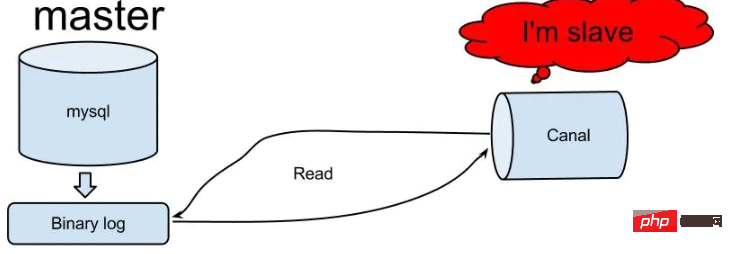 怎么使用SpringBoot+Canal实现数据库实时监控May 10, 2023 pm 06:25 PM
怎么使用SpringBoot+Canal实现数据库实时监控May 10, 2023 pm 06:25 PMCanal工作原理Canal模拟MySQLslave的交互协议,伪装自己为MySQLslave,向MySQLmaster发送dump协议MySQLmaster收到dump请求,开始推送binarylog给slave(也就是Canal)Canal解析binarylog对象(原始为byte流)MySQL打开binlog模式在MySQL配置文件my.cnf设置如下信息:[mysqld]#打开binloglog-bin=mysql-bin#选择ROW(行)模式binlog-format=ROW#配置My
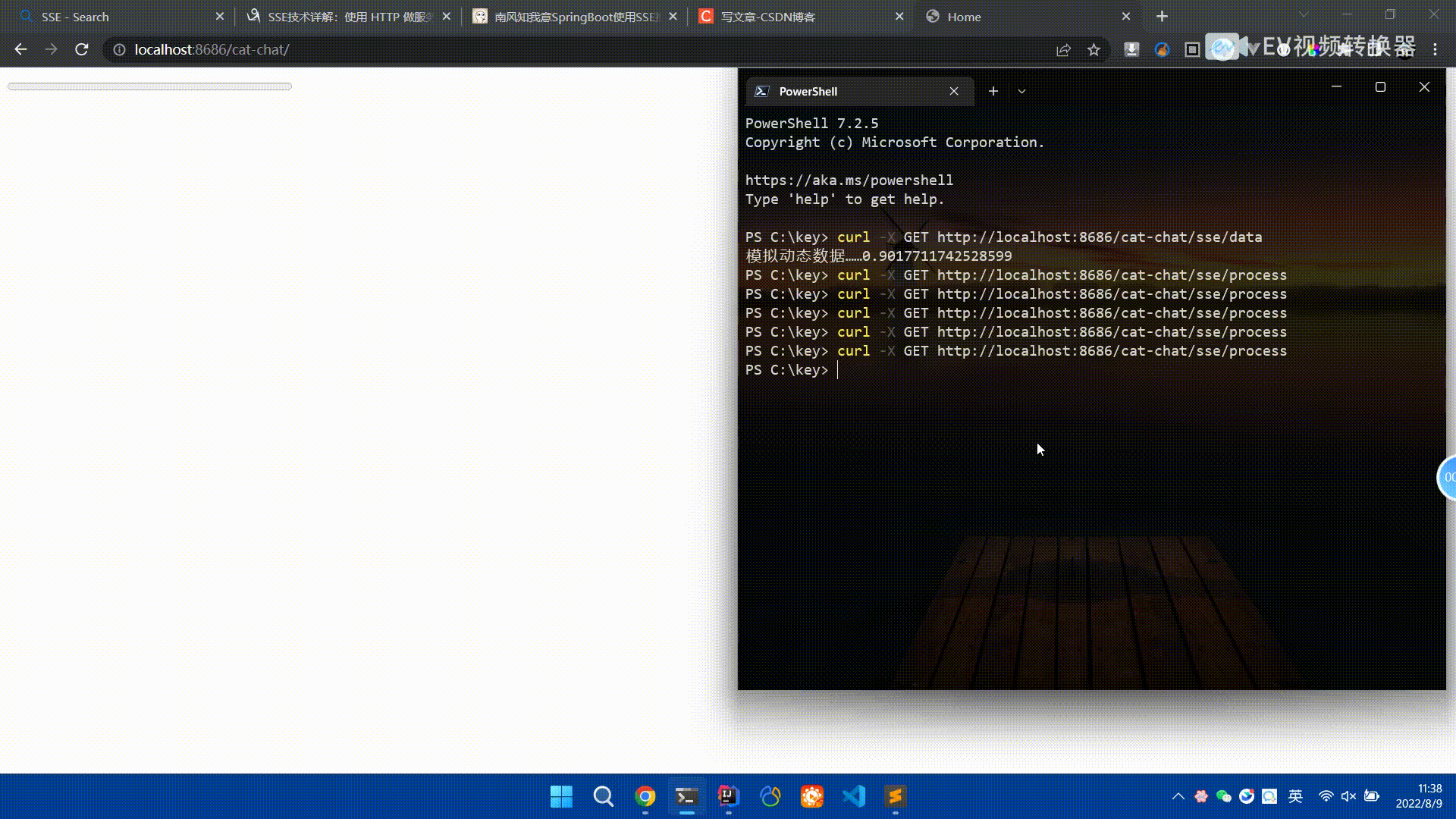 Spring Boot怎么使用SSE方式向前端推送数据May 10, 2023 pm 05:31 PM
Spring Boot怎么使用SSE方式向前端推送数据May 10, 2023 pm 05:31 PM前言SSE简单的来说就是服务器主动向前端推送数据的一种技术,它是单向的,也就是说前端是不能向服务器发送数据的。SSE适用于消息推送,监控等只需要服务器推送数据的场景中,下面是使用SpringBoot来实现一个简单的模拟向前端推动进度数据,前端页面接受后展示进度条。服务端在SpringBoot中使用时需要注意,最好使用SpringWeb提供的SseEmitter这个类来进行操作,我在刚开始时使用网上说的将Content-Type设置为text-stream这种方式发现每次前端每次都会重新创建接。最
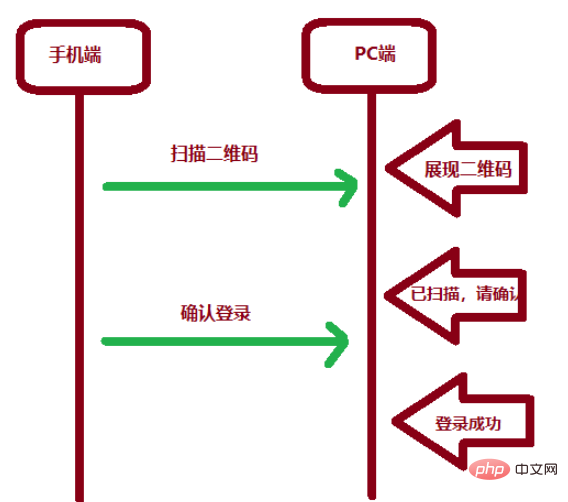 SpringBoot怎么实现二维码扫码登录May 10, 2023 pm 08:25 PM
SpringBoot怎么实现二维码扫码登录May 10, 2023 pm 08:25 PM一、手机扫二维码登录的原理二维码扫码登录是一种基于OAuth3.0协议的授权登录方式。在这种方式下,应用程序不需要获取用户的用户名和密码,只需要获取用户的授权即可。二维码扫码登录主要有以下几个步骤:应用程序生成一个二维码,并将该二维码展示给用户。用户使用扫码工具扫描该二维码,并在授权页面中授权。用户授权后,应用程序会获取一个授权码。应用程序使用该授权码向授权服务器请求访问令牌。授权服务器返回一个访问令牌给应用程序。应用程序使用该访问令牌访问资源服务器。通过以上步骤,二维码扫码登录可以实现用户的快
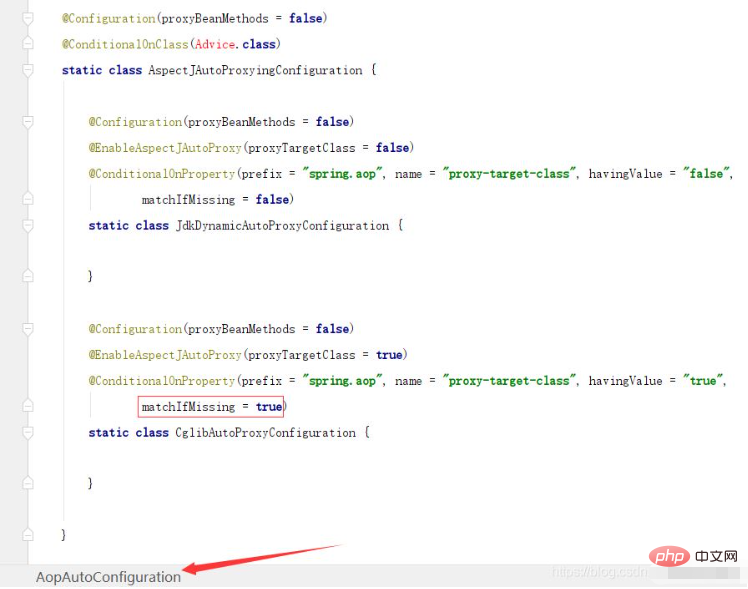 SpringBoot/Spring AOP默认动态代理方式是什么May 10, 2023 pm 03:52 PM
SpringBoot/Spring AOP默认动态代理方式是什么May 10, 2023 pm 03:52 PM1.springboot2.x及以上版本在SpringBoot2.xAOP中会默认使用Cglib来实现,但是Spring5中默认还是使用jdk动态代理。SpringAOP默认使用JDK动态代理,如果对象没有实现接口,则使用CGLIB代理。当然,也可以强制使用CGLIB代理。在SpringBoot中,通过AopAutoConfiguration来自动装配AOP.2.Springboot1.xSpringboot1.xAOP默认还是使用JDK动态代理的3.SpringBoot2.x为何默认使用Cgl
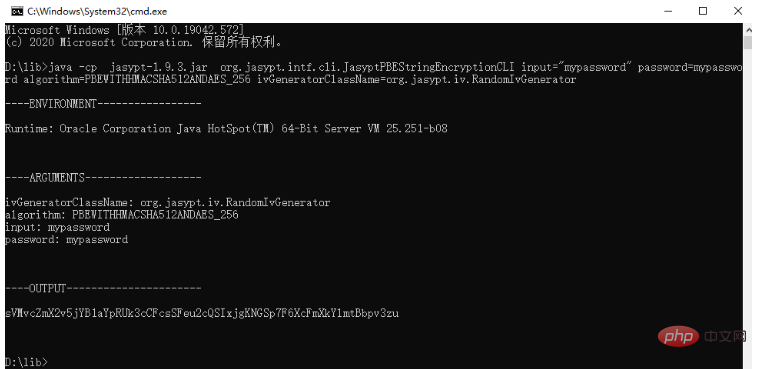 spring boot怎么对敏感信息进行加解密May 10, 2023 pm 02:46 PM
spring boot怎么对敏感信息进行加解密May 10, 2023 pm 02:46 PM我们使用jasypt最新版本对敏感信息进行加解密。1.在项目pom文件中加入如下依赖:com.github.ulisesbocchiojasypt-spring-boot-starter3.0.32.创建加解密公用类:packagecom.myproject.common.utils;importorg.jasypt.encryption.pbe.PooledPBEStringEncryptor;importorg.jasypt.encryption.pbe.config.SimpleStrin
 使用Java SpringBoot集成POI实现Word文档导出Apr 21, 2023 pm 12:19 PM
使用Java SpringBoot集成POI实现Word文档导出Apr 21, 2023 pm 12:19 PM知识准备需要理解ApachePOI遵循的标准(OfficeOpenXML(OOXML)标准和微软的OLE2复合文档格式(OLE2)),这将对应着API的依赖包。什么是POIApachePOI是用Java编写的免费开源的跨平台的JavaAPI,ApachePOI提供API给Java程序对MicrosoftOffice格式档案读和写的功能。POI为“PoorObfuscationImplementation”的首字母缩写,意为“简洁版的模糊实现”。ApachePOI是创建和维护操作各种符合Offic
 springboot怎么整合shiro实现多验证登录功能May 10, 2023 pm 04:19 PM
springboot怎么整合shiro实现多验证登录功能May 10, 2023 pm 04:19 PM1.首先新建一个shiroConfigshiro的配置类,代码如下:@ConfigurationpublicclassSpringShiroConfig{/***@paramrealms这儿使用接口集合是为了实现多验证登录时使用的*@return*/@BeanpublicSecurityManagersecurityManager(Collectionrealms){DefaultWebSecurityManagersManager=newDefaultWebSecurityManager();
 springboot怎么配置mybatis和事务管理May 10, 2023 pm 07:13 PM
springboot怎么配置mybatis和事务管理May 10, 2023 pm 07:13 PM一、springboot与mybatis的配置1.首先,springboot配置mybatis需要的全部依赖如下:org.springframework.bootspring-boot-starter-parent1.5.1.RELEASEorg.springframework.bootspring-boot-starter-web1.5.1.RELEASEorg.mybatis.spring.bootmybatis-spring-boot-starter1.2.0com.oracleojdbc


Hot AI Tools

Undresser.AI Undress
AI-powered app for creating realistic nude photos

AI Clothes Remover
Online AI tool for removing clothes from photos.

Undress AI Tool
Undress images for free

Clothoff.io
AI clothes remover

AI Hentai Generator
Generate AI Hentai for free.

Hot Article

Hot Tools

EditPlus Chinese cracked version
Small size, syntax highlighting, does not support code prompt function

ZendStudio 13.5.1 Mac
Powerful PHP integrated development environment

VSCode Windows 64-bit Download
A free and powerful IDE editor launched by Microsoft

SublimeText3 Mac version
God-level code editing software (SublimeText3)

Dreamweaver Mac version
Visual web development tools






